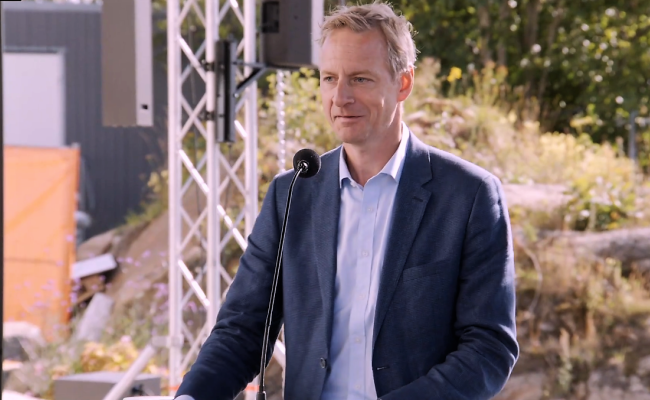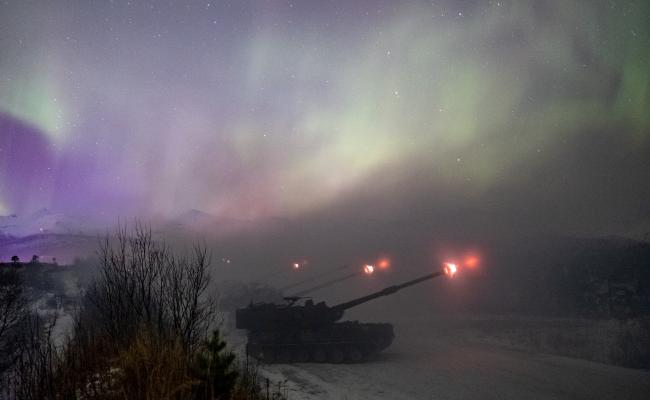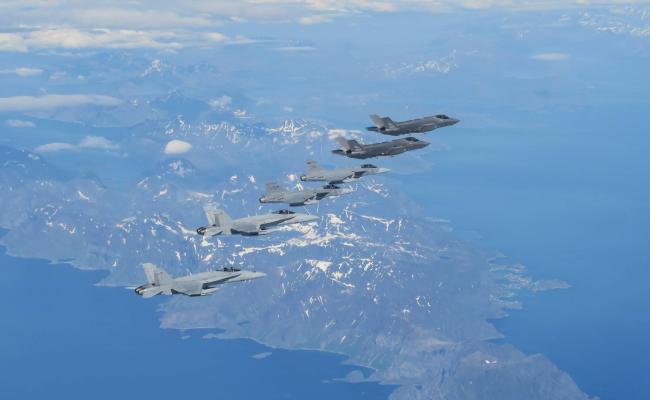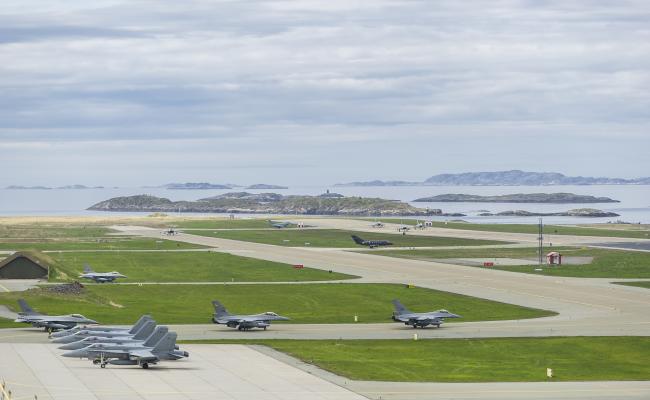From Sea King to SAR Queen: It Will Mean A Lot for Us in the North
Captain Remi Olsen is the 330 Squadron Department Manager in Bodø. In the background, we see Norway's new Search and Rescue helicopter AW101 SAR Queen. (Photo: Hilde Bye).
After nearly fifty years of service along the mountains and coast of Nordland, Northern Norway, the rescue helicopter Sea King will now be replaced by the SAR Queen. In terms of preparedness, the change is a milestone for the people in Nordland, says Captain Remi Olsen at the 330 Squadron in Bodø.
On Monday, the Sea King helicopters were officially replaced by the new SAR Queen for preparedness at the 330 Squadron in Bodø.
Bodø is the fourth Air Force base where the change has taken place. SAR Queen is already on standby at the Sola, Banak, and Ørland air bases.
"In terms of preparedness, this change is a milestone for the people in Nordland. The SAR Queen is a helicopter with better possibility, which flies faster and more effectively than we could with the Sea King, says Captain Remi Olsen to High North News. Olsen is the Department Manager at the 330 Squadron in Bodø.
Captain Remi Olsen recently took over as Department Manager for the 330 Squadron in Bodø. He has worked at the department in Bodø for 21 years and has 4000 hours of Sea King missions behind him. (Photo: Hilde-Gunn Bye)
"The helicopter will mean a lot for us in Northern Norway. The reach and speed will have a lot to say because of the large distances here in Nordland and further north," says Olsen.
The rescue helicopter service at the 330 Squadron in Bodø covers a preparedness area between Brønnøysund and Vesterålen. However, the entirety of Northern Norway may also be of relevance for larger operations. Svalbard is also considered a part of our operational area in case of incidents that require large resources.
SAR Queen ready for takeoff at the Bodø air station. (Photo: Hilde Bye).
SAR Queen, Bodø. (Photo: Hilde Bye).
New systems prevent icing
The major benefit of the new SAR Queen helicopter is the de-icing system on the rotor.
"It will save time and be important to save lives," says Chief of the Norwegian Air Force Rolf Folland to High North News. Major General Folland has extensive experience as a helicopter pilot in the Air Force and has been Squadron Commander for both 330 Squadron and 337 Squadron.
Folland explains that the helicopter can be flown in cases of moderate icing, through clouds in the winter, and directly over the mountains, instead of flying routes low over the sea or through fjords to get to the destination. With the de-icing system, for example, an operation from Banak to Tromsø will take much less time. This also provides a greater capacity out at sea since the rescue service can get to the person or persons in need more quickly, and can carry out a more efficient rescue operation, he says.
"It will be a big leap from the relatively old Sea King to a hyper-modern SAR Queen. This transition has also gone seamlessly without a reduction in preparedness. I am very pleased that we have been able to maintain such a high level of preparedness during this change," Folland adds.
In addition to more modern and other automatized systems, the AW101 will be a better workplace for those aboard.
"The helicopter is easier to operate, even though it also has complicated systems. That means that we will also have excess resources to plan an operation in a better way and use less capacity on the actual flying of the machine," explains Department Manager Remi Olsen in Bodø.
Chief of the Norwegian Air Force Major General Rolf Folland. (Photo: Hilde Bye).
Minister of Justice and Public Security Emilie Enger Mehl (Centre Party) og Chief of the Air Force Folland at the 330 Sqadron in Bodø after a tour with the SAR Queen. (Photo: Hilde Bye).
4000 hours of Sea King
The rescue helicopter Sea King has been operating for almost 50 years in Bodø. Captain Olsen says many have reached out to express how much the aircraft has meant to them.
"Among others, there are many people along the coast who have expressed sadness at the sound of the Sea King disappearing. They see it as security when it flies by. Many have had a connection to the helicopter," he says.
"With that said, the SAR Queen will hopefully be the same for the people in its further service, and represent what the Sea King has done up to today."
The chief of the 330 Squadron department in Bodø has flown 4000 hours with the Sea King on missions over 20 years. He says that he looks back on many stories, from mountains and oceans, with young and old people, as well as a wide range of emotions.
"Our mission is to get the helicopter, doctor, and rescuer back and forth. You must put your feelings aside, but sometimes it is extra special," he concludes.
The rescue helicopter Sea King. Here at the 330 Squadron in Bodø. (Photo: Hilde Bye)
SAR Queen and the Rescue Helicopter Service
- The AW101 SAR Queen is Norway's new search and rescue helicopter. SAR is an acronym for "search and rescue".
- The first helicopters started operating from the Norwegian Air Force's base in Sola in 2020.
- The AW101 fleet will be fully operational in all departments within 2023. At the same time, today's Sea King will be retired.
- The supplier of the helicopters is Leonardo Helicopters in England. The cruise speed of the helicopter is 278 km/h, the range is 266 nautical miles (approx. 500 km) and the crew consists of six people.
- The new rescue helicopter is far better equipped to handle Norwegian weather and wind. Advanced search systems make the Rescue Helicopter Service better able to solve missions, clarifies the Norwegian Armed Forces.
- The Rescue Helicopter Service has its main base in Sola and has departments at Banak, Bodø, Ørland, Florø, and Rygge.
- The Rescue Helicopter Service cooperates with, among others, the Red Cross, alpine and rescue groups, the Norwegian Air Ambulance, the Norwegian Society for Sea Rescue, the fire departments, the police, and the health care system. The Norwegian Armed Forces operate the service on behalf of the Ministry of Justice and Public Security.
- The 330 Squadron is subordinate to the Rescue Helicopter Service (RHT).
Source: the Norwegian Armed Forces.
Also read
This article was originally published in Norwegian and has been translated by Birgitte Annie Molid Martinussen.





